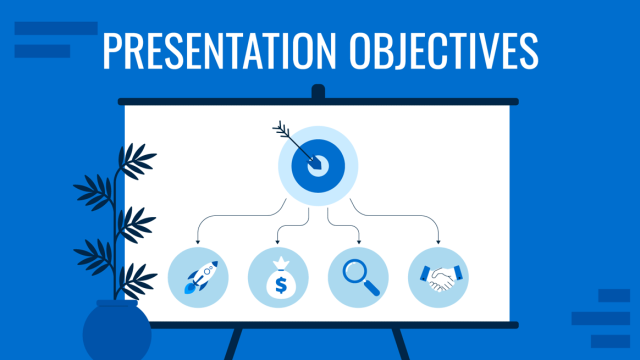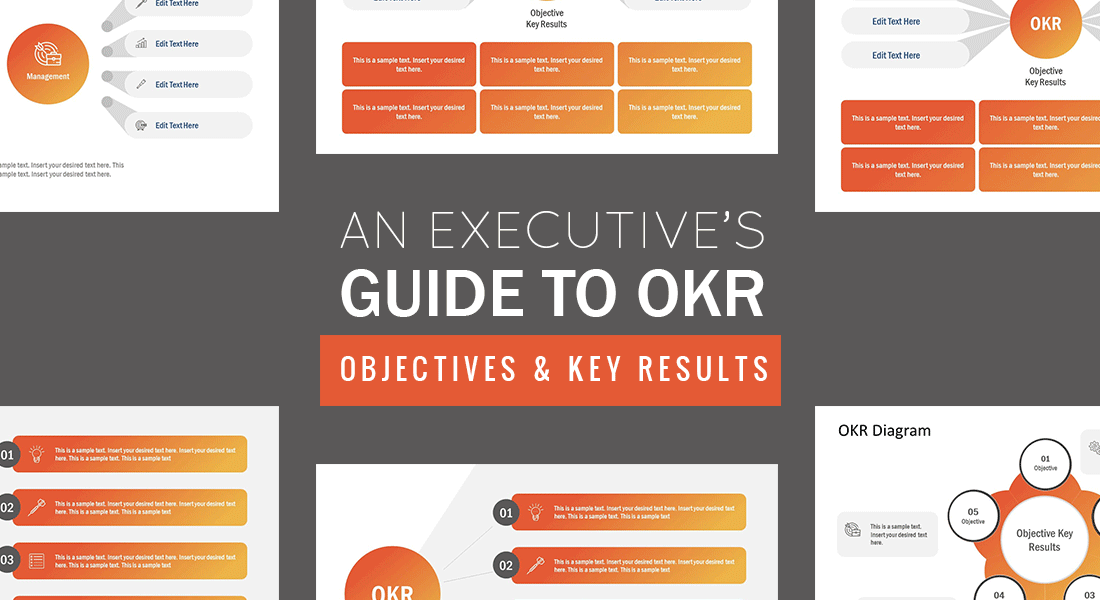
Setting ambitious goals is easy. Reaching them is 10X harder. When that goal is divided across multiple people, the track to success can get even longer. So how do you keep your teams aligned on the same goal and ensure that their everyday work positively contributes towards a larger end-goal? You can try the OKR framework.
- What is OKR?
- How OKR Works
- The Benefits of OKRs
- How OKR Differs from Other Goal Setting Techniques
- Example: Setting Up OKRs at Your Company
- Final Words
What is OKR?
OKR, short for objectives and key results, is a lean business goal setting technique, aimed at steering alignment, engagement, and targeted execution around measurable goals. It boils down to organizing your goals and priorities using one simple sentence:
I will ________ as measured by ____________.
But don’t get fooled by the seeming OKRs simplicity. The complete OKR methodology is a tad bit more sophisticated as we’ll explain shortly.
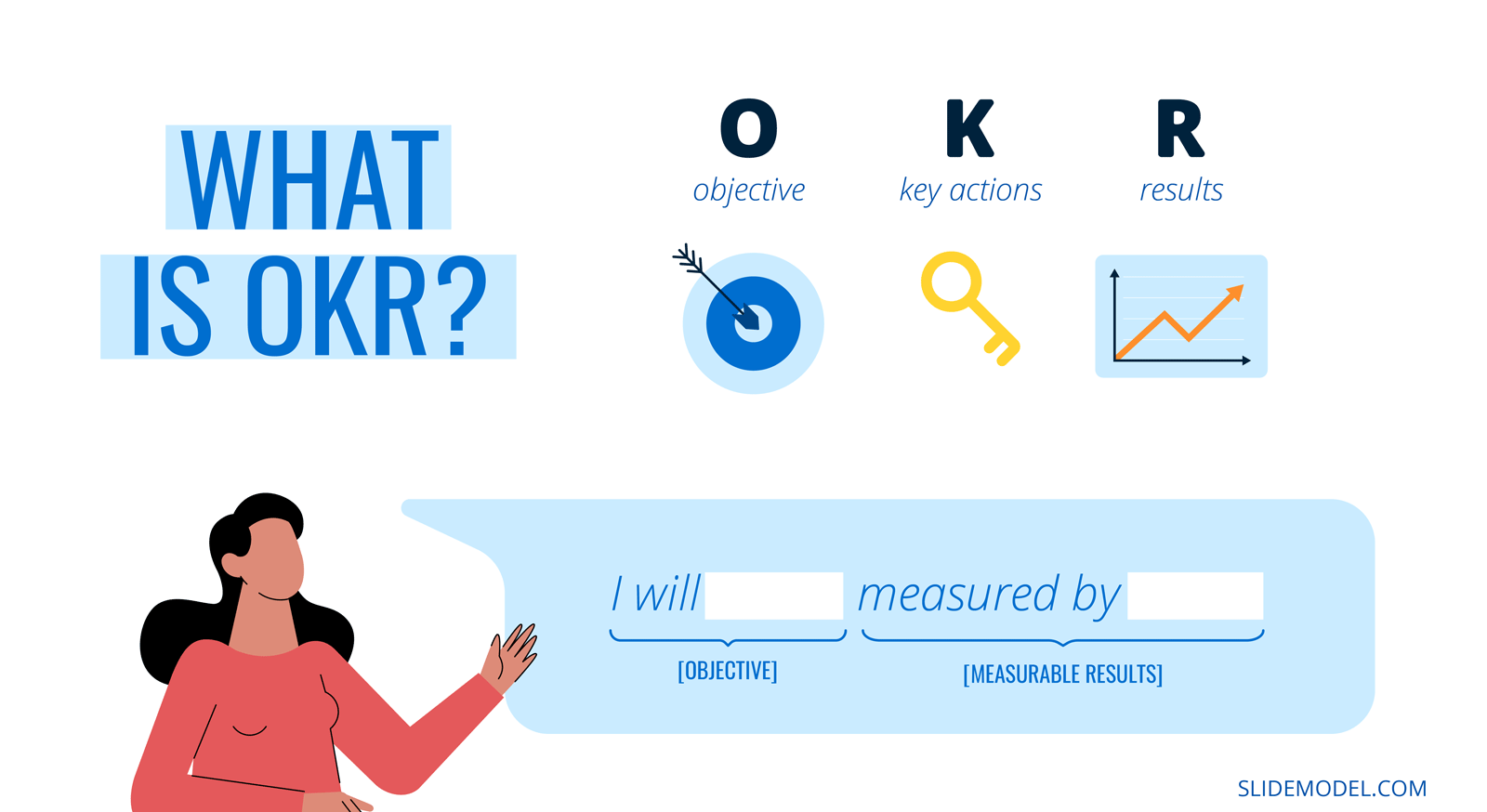
The OKR framework was popularized by Andy Grove (former Intel CEO) in the late 1970s. As the company was undergoing business model change, Grove realized that he lacked engagement and support at the grassroots levels as individual employers did not fully understand the new business priorities. The introduction of the ORK system helped Grove secure buy-in from all staff and help individual workers direct their effort towards the key company goals.
John Doerr was working along with Andy Grove at that time. He was fascinated with Grove’s managerial approach and went on to borrow the OKR technique. In the late 2000s, Doerr introduced the OKR process to Google leadership and who still use the technique today:
It took a couple of iterations, but we figured out the right cadence and model and to this day, Larry [Page] writes his OKRs and Google’s corporate OKRs every quarter. – John Doerr
Google OKR success propelled further spreading of this practice across Silicon Valley and well beyond it. Today, an array of other market leaders including Twitter, Spotify, Airbnb, Walmart, Target, and The Guardian among others swear by OKRs.
How OKR Works
To further understand OKR meaning, let’s drill one level deeper into the practice.
Doerr’s OKR formula has two core elements an objective (I will) and measurable results (measured by). To formalize both of these, you need to answer two questions:
- Where do I want to get? Your answer will be your objective.
- How will I measure my pace of getting there? This answer specifies the key milestones and results you are after.
Lastly, you have to bridge the gap between the stated goal and desired results. That’s where Key Activities come in. OKR plans specify the exact actions you’ll need to take to reach the results you’ve outlined.
Here’s an example of how the entire plan looks based on our OKR PowerPoint Template:
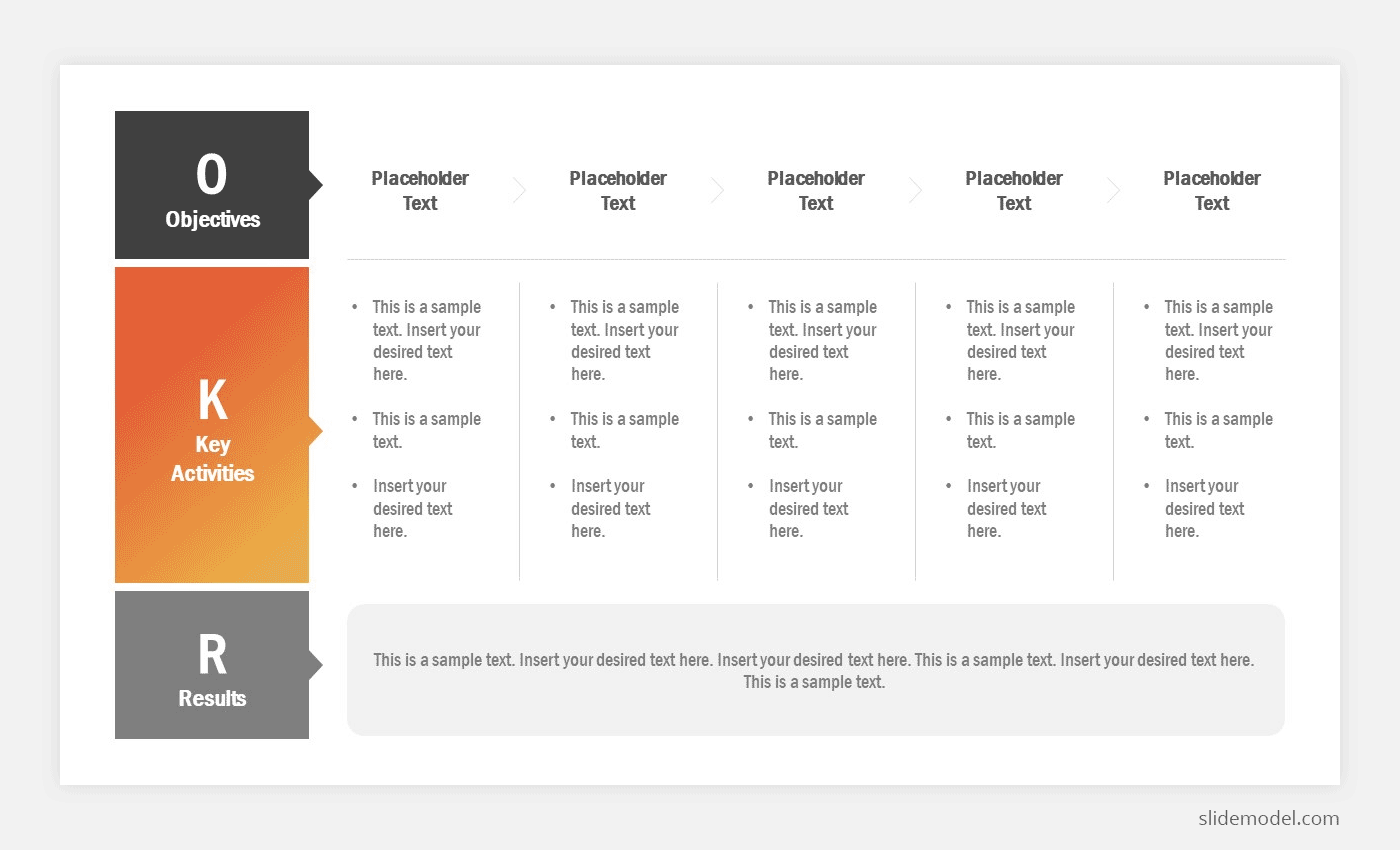
Let’s say you want to set business OKRs for your go-to-market strategy. Here’s a quick OKR example for that:
Objective: Launch a new cosmetics product that customers will love.
Key Activities:
- Perform market target buyer research.
- Schedule focus group interviews.
- Send gift kits to beauty editors and influencers.
- Launch an Instagram marketing campaign.
- Configure e-commerce goal tracking.
Results:
- Improve brand recognition and recall by 3 points
- Increase daily website traffic by 15%
- Secure $25,000 of attributed sales from Instagram by Nov, 25th.
The Benefits of OKRs
Here’s the deal: most people in your company have little clue to how their day-to-day work contributes to the company’s goals. One survey found that only 55% of mid-level managers could name at least one of their company’s top five strategic priorities.
That’s problematic since lack of alignment leads to lower employer engagement, worse department results, and ultimately directly impacts the business bottom lines. OKRs, on the contrary, help the teams get a better sense of direction and focus on reaching the results that matter. Such targeted refocusing, in turn, translates to better performance and better business results. Another study suggests that one sales team who started using OKRs saw an 8.5% increase in their average sales per hour volume.

Jack Dorsey, CEO of Twitter, summed up the benefits of OKR pretty well:
[OKRs] are a great way to help everyone in the company understand what’s important and how you’re going to measure what’s important. It’s essentially a great way to communicate strategy and how you’re going to measure strategy.
Apart from the positive impact on bottom lines and communication, here are other benefits of OKR:
- Faster progress
- Higher employee motivation
- Improved cross-functional collaboration
- Leaner processes and operational agility
- Better autonomy and accountability
- Sharper focus and stronger discipline
How OKR Differs from Other Goal Setting Techniques
The corporate lingo has a lot of other funky acronyms, used in business planning. So let’s take a closer look at how OKR stacks against other popular business goal-setting techniques.
OKR vs KPI
KPI, short for Key Performance Indicator, is a metric for measuring the success of ongoing activities that are already in place. It’s a fixed end-goal you are working towards. OKR, on the other hand, also specifies the journey you need to take to nail that goal.
So KPIs are often taken as a starting point for creating the Key Results for a loftier objective. In essence, OKRs often contain KPIs, but not the other way around.
OKR vs SMART Goals
SMART stands for Short, Measurable, Attainable, and Time-Based goals.
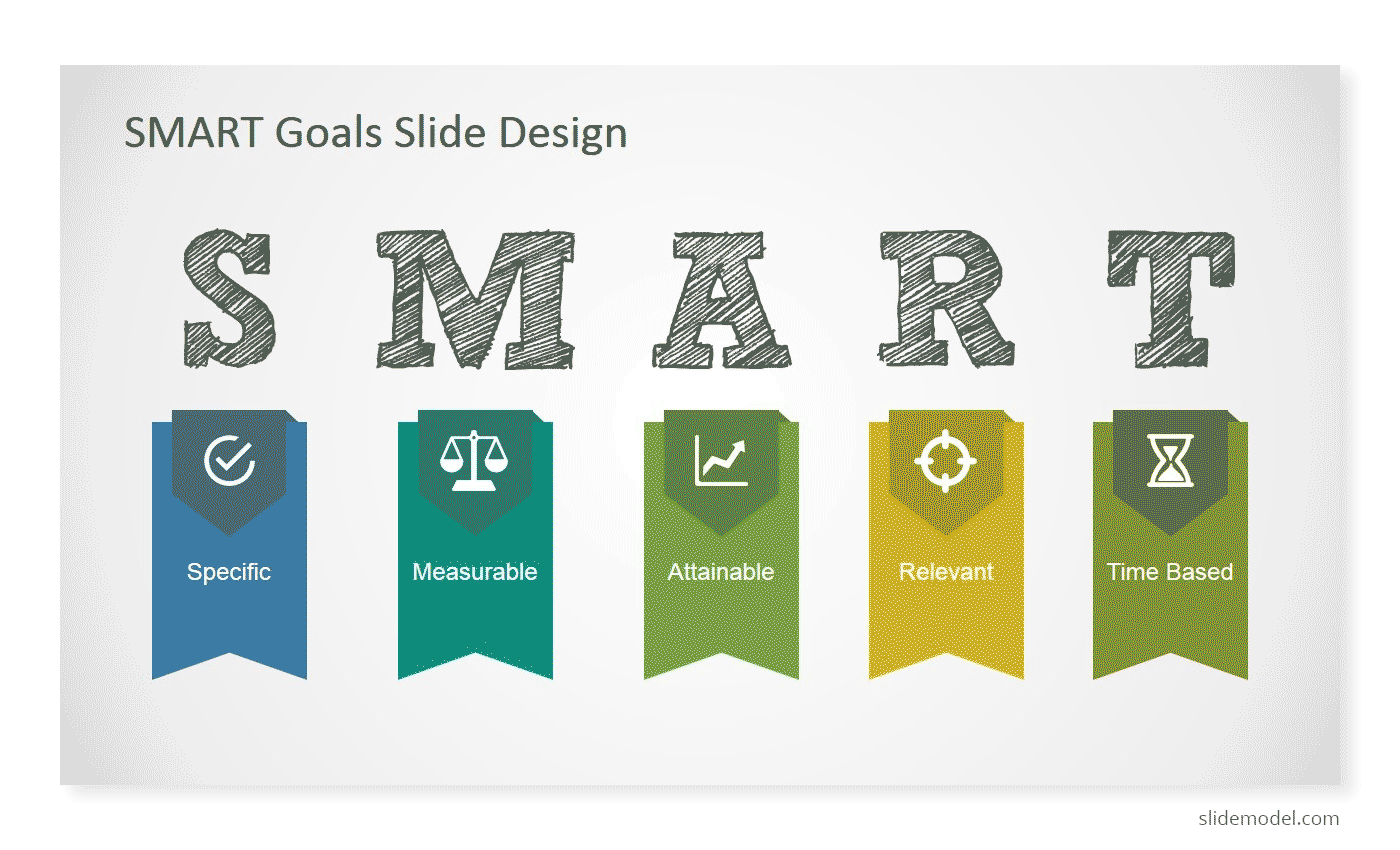
SMART goals are similar to OKR since both help structure intangible aspirations into scoped and measured business objectives. However, the main difference between a SMART goal vs OKR is that OKRs place a greater emphasis on the journey towards the key results.
While SMART goals also have the “M” (measurable) component, this describer often gets swiped for Motivational or Meaningful. As a result, SMART goals lose their “measurability”. OKRs, on the contrary, have a rigid structure that emphasizes the measurement of progress at all times.
Also, OKRs are often hierarchical and exist on multiple levels e.g. the ultimate corporate OKR is further supported by company-wide OKRs, set for the executive team. The SMART framework, on the contrary, is better suited for isolated goals and cannot be scaled to set relationships between different goals across the organization.
OKR vs Balanced Scorecard
Balanced scorecards are another popular managerial technique that’s also focused on setting company-wide objectives and measures to gauge the effectiveness of achieving them.
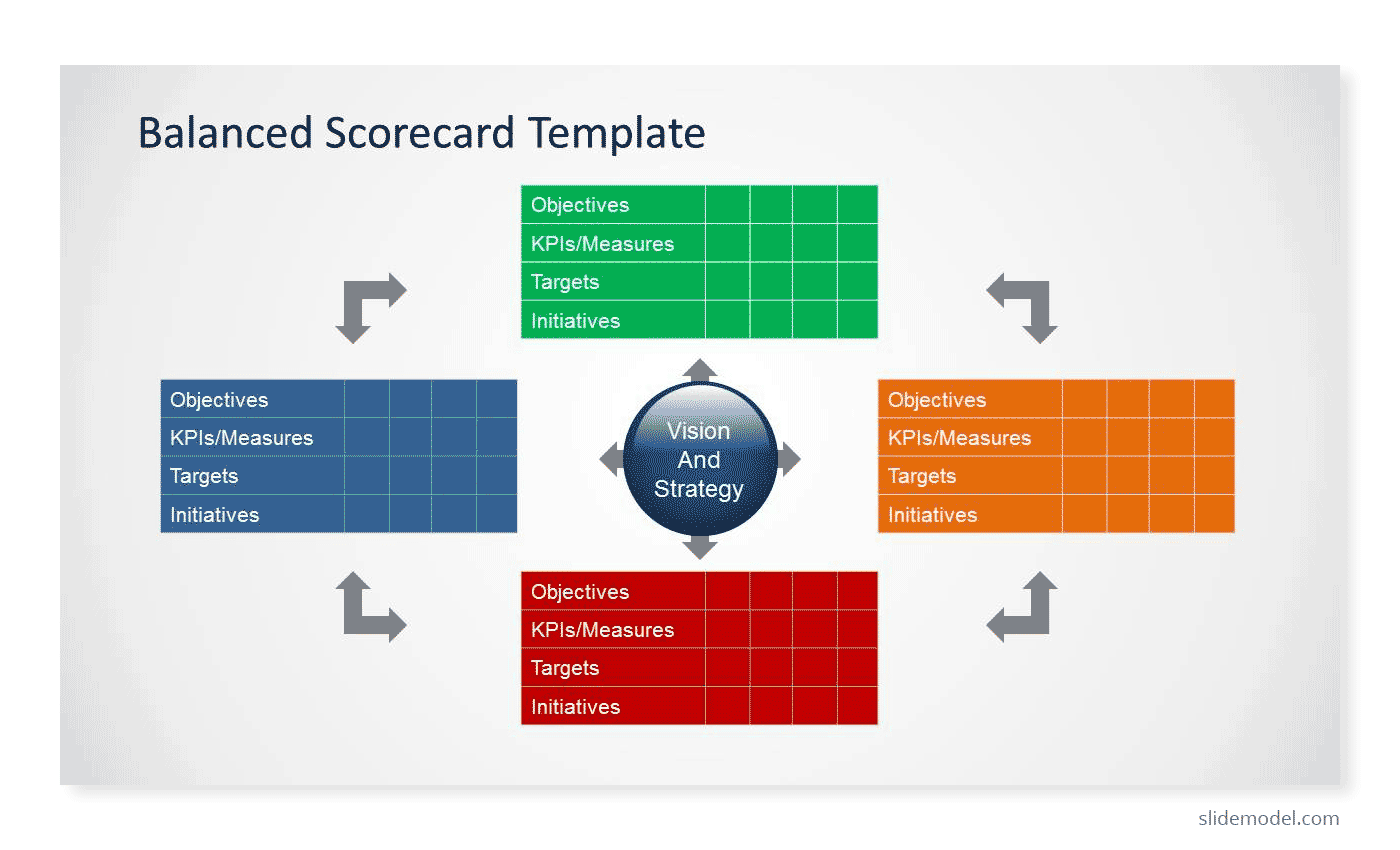
On the surface level, the two techniques are very similar. However, there are two important differences between OKR and a Balanced scorecard:
- Cadence: With Balanced scorecards, most companies set business objectives and measures spanning over 1 year minimal. OKRs assume shorter timelines and are aimed at setting objectives for the next 90 days max.
- Parameters for creation. Balanced scorecards prompt you to set business objectives and measures in four perspectives of performance: Financial, Customer, Internal Processes, Learning & Growth. OKRs do not pose these limits and prompt you to focus on any operational area that’s important for the next quarter.
Example: Setting Up OKRs at Your Company
You already know the general framework for setting OKRs objective + key activities + result = OKR. Your next goal is to scale the approach across your company from the top level to individual employees. Here’s a possible way to approach this:
Create a company-wide OKR hierarchy
OKRs drive the best results when they follow a top-to-bottom structure from the largest objective, based around the current company vision down to individual objectives, contributing to the ultimate goal.
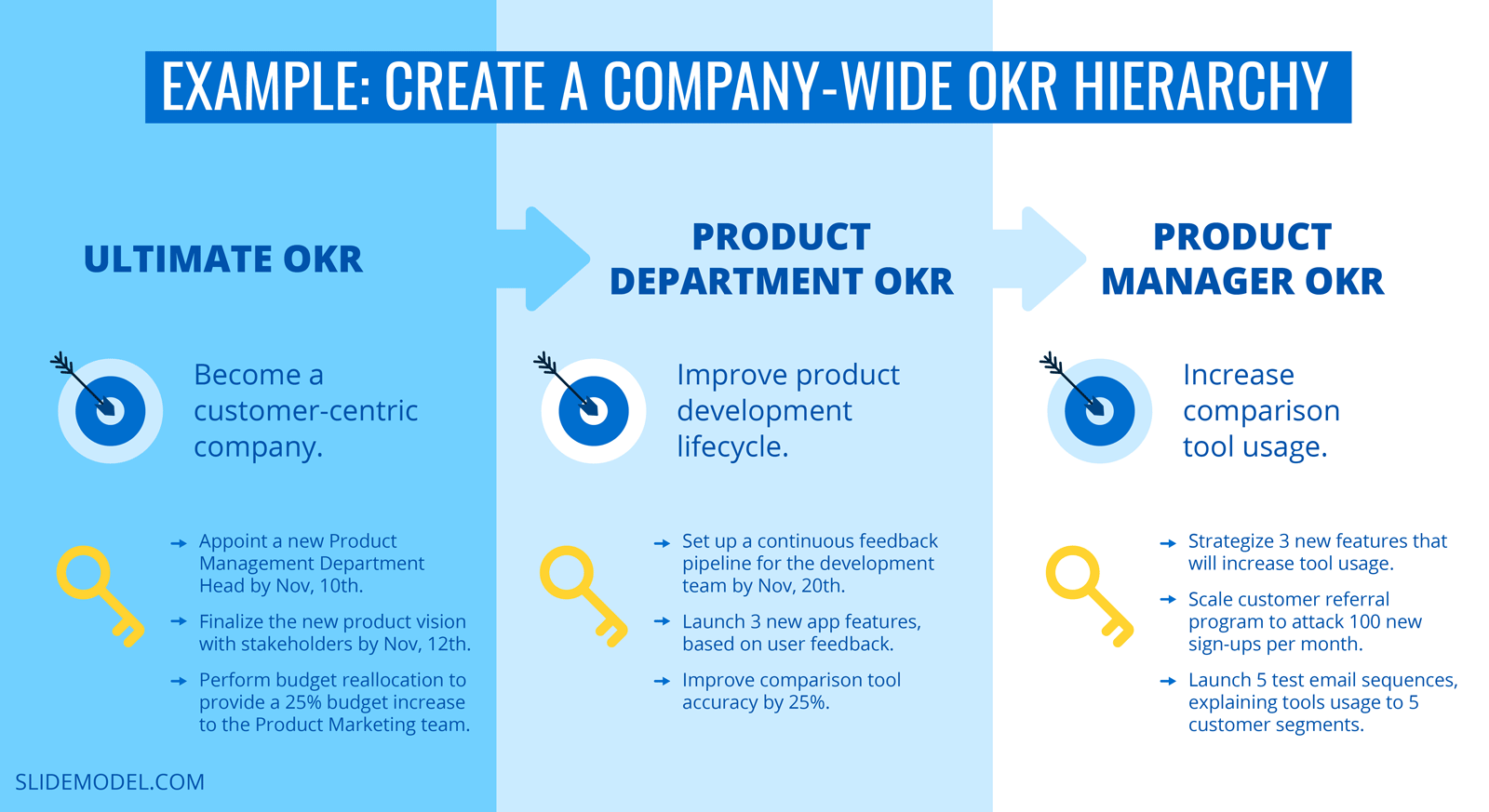
A sample OKR structure for such an approach can look the following way:
Ultimate OKR
Become a customer-centric company.
Key results:
- Appoint a new Product Management Department Head by Nov, 10th.
- Finalize the new product vision with stakeholders by Nov, 12th.
- Perform budget reallocation to provide a 25% budget increase to the Product Marketing team.
Product Department OKR
Improve product development lifecycle.
Key results:
- Set up a continuous feedback pipeline for the development team by Nov, 20th.
- Launch 3 new app features, based on user feedback.
- Improve comparison tool accuracy by 25%.
Product Manager OKR
Increase comparison tool usage.
Key results:
- Strategize 3 new features that will increase tool usage.
- Scale customer referral program to attack 100 new sign-ups per month.
- Launch 5 test email sequences, explaining tools usage to 5 customer segments.
Determine the optimal OKR cadence
Originally, the OKR methodology was based around quarterly cycles. However, that’s not a rule set in stone. Some companies choose to set different OKR cadence for higher-level, long term OKRs (e.g 6 months) and shorter timeframe for team or individual OKRs (e.g. 4 weeks).
However, such an approach can work well for some teams, but create issues for others. Different OKR cycle lengths can add to operational overhead or misalignment, as the general cadence flow may get messed up.
To avoid that, set the 90-day OKR cycle for everyone at first. Then augment it with extra check-in milestones. Schedule regular team/department presentations on OKRs progress, mid-term results, and potential bottlenecks to monitor overall progress and make adjustments.
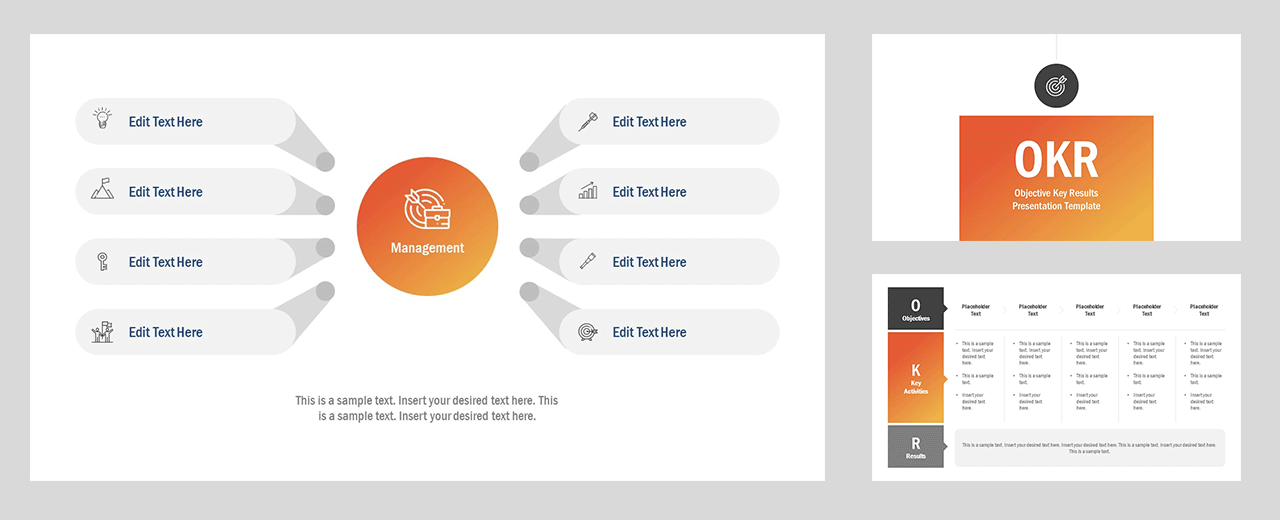
Helpful template for OKR presentations: OKR PowerPoint Template by SlideModel
Review and Grade Your OKRs
The whole point of OKRs is to measure the progress being made towards the objective. That’s why to make them even more effective, you should carefully assess performance on each OKR during the review sessions.
The easiest way is to use Google’s approach and mark each OKR on a scale from 0.0. to 1.0. For instance, if you have managed to ‘send 3 email campaigns instead of 6’, your OKR rating will be 0.5. Doing so can help individual workers and teams gain a better sense of where they are now, reflect on the progress made, and double the effort in areas with the lowest scores.
To streamline the scoring process, you can customize an OKR grading spreadsheet from Google or look into more advanced SaaS OKR tools that are now aplenty on the market.
Final Words
The larger the company the less clarity there is among individual team members about its direction. OKR framework helps fix that by suggesting a streamlined, hierarchical, and result-driven approach to communicating the company vision and ensuring that the main ideas travel lower down to the grassroots levels.
Remember: your goal is to create short, memorable objectives, and back them by 2 to 5 measurable key results. This way you can move to success in a sustainable, effective pace!


